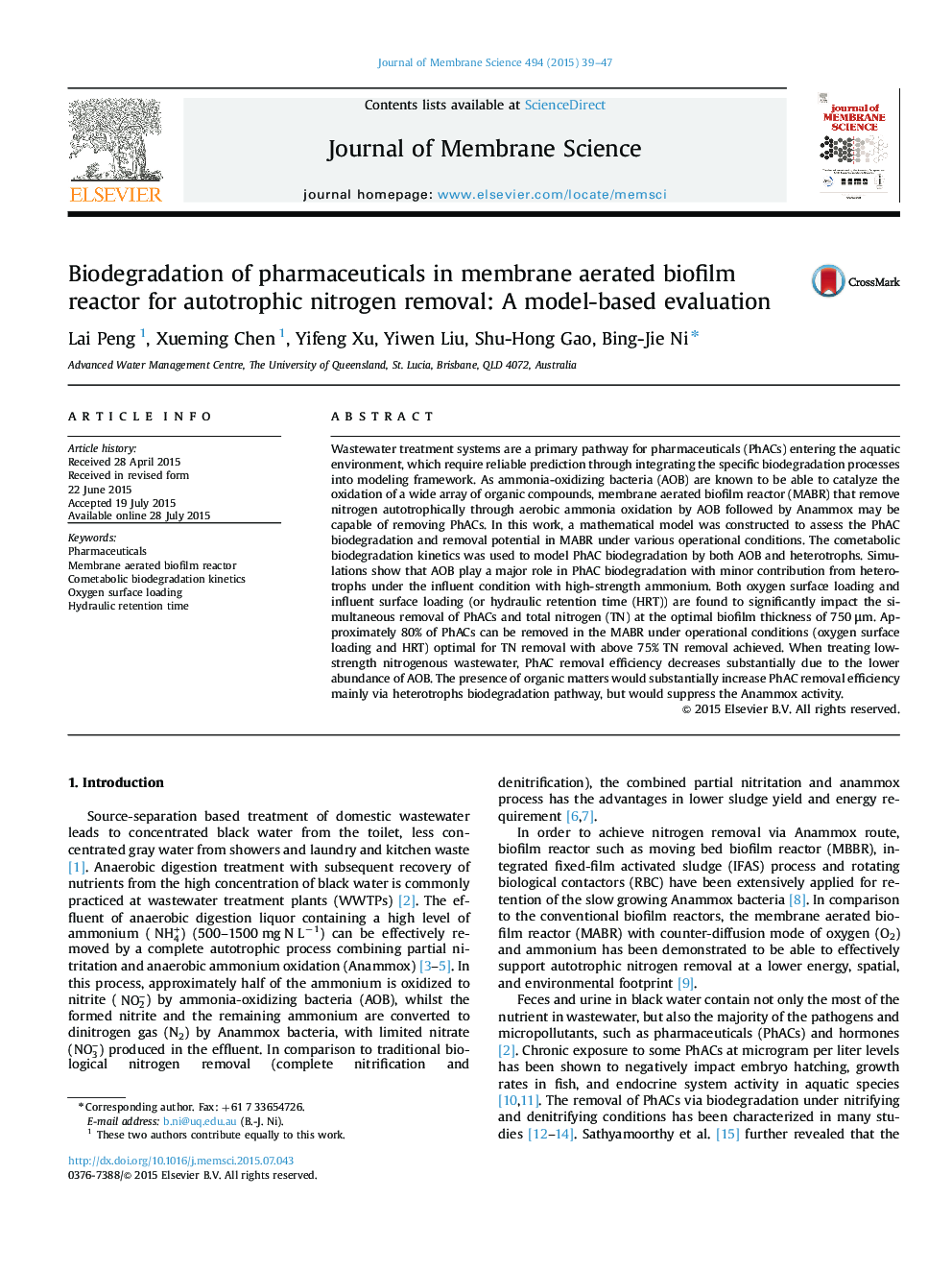| Article ID | Journal | Published Year | Pages | File Type |
|---|---|---|---|---|
| 7020908 | Journal of Membrane Science | 2015 | 9 Pages |
Abstract
Wastewater treatment systems are a primary pathway for pharmaceuticals (PhACs) entering the aquatic environment, which require reliable prediction through integrating the specific biodegradation processes into modeling framework. As ammonia-oxidizing bacteria (AOB) are known to be able to catalyze the oxidation of a wide array of organic compounds, membrane aerated biofilm reactor (MABR) that remove nitrogen autotrophically through aerobic ammonia oxidation by AOB followed by Anammox may be capable of removing PhACs. In this work, a mathematical model was constructed to assess the PhAC biodegradation and removal potential in MABR under various operational conditions. The cometabolic biodegradation kinetics was used to model PhAC biodegradation by both AOB and heterotrophs. Simulations show that AOB play a major role in PhAC biodegradation with minor contribution from heterotrophs under the influent condition with high-strength ammonium. Both oxygen surface loading and influent surface loading (or hydraulic retention time (HRT)) are found to significantly impact the simultaneous removal of PhACs and total nitrogen (TN) at the optimal biofilm thickness of 750 μm. Approximately 80% of PhACs can be removed in the MABR under operational conditions (oxygen surface loading and HRT) optimal for TN removal with above 75% TN removal achieved. When treating low-strength nitrogenous wastewater, PhAC removal efficiency decreases substantially due to the lower abundance of AOB. The presence of organic matters would substantially increase PhAC removal efficiency mainly via heterotrophs biodegradation pathway, but would suppress the Anammox activity.
Related Topics
Physical Sciences and Engineering
Chemical Engineering
Filtration and Separation
Authors
Lai Peng, Xueming Chen, Yifeng Xu, Yiwen Liu, Shu-Hong Gao, Bing-Jie Ni,
